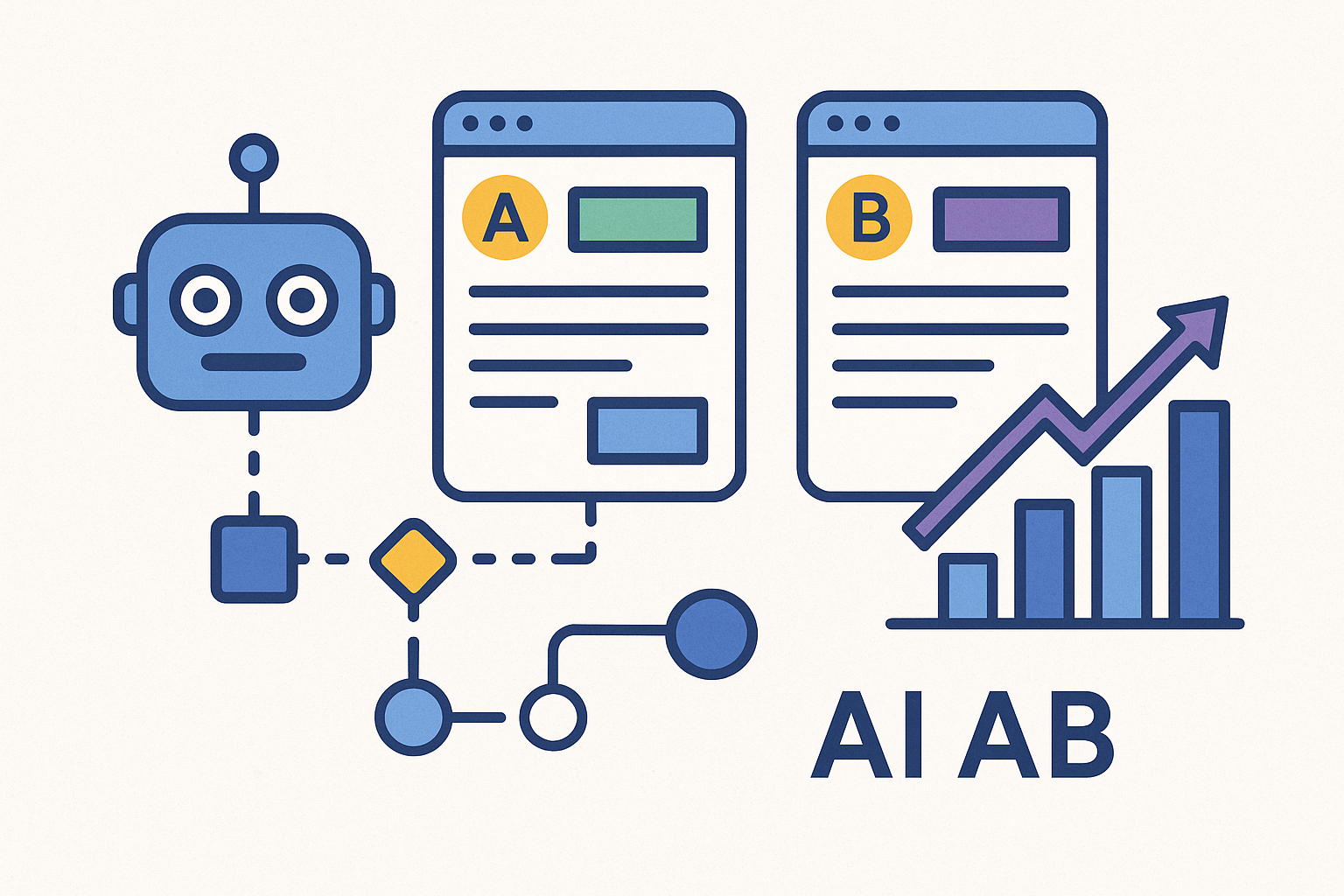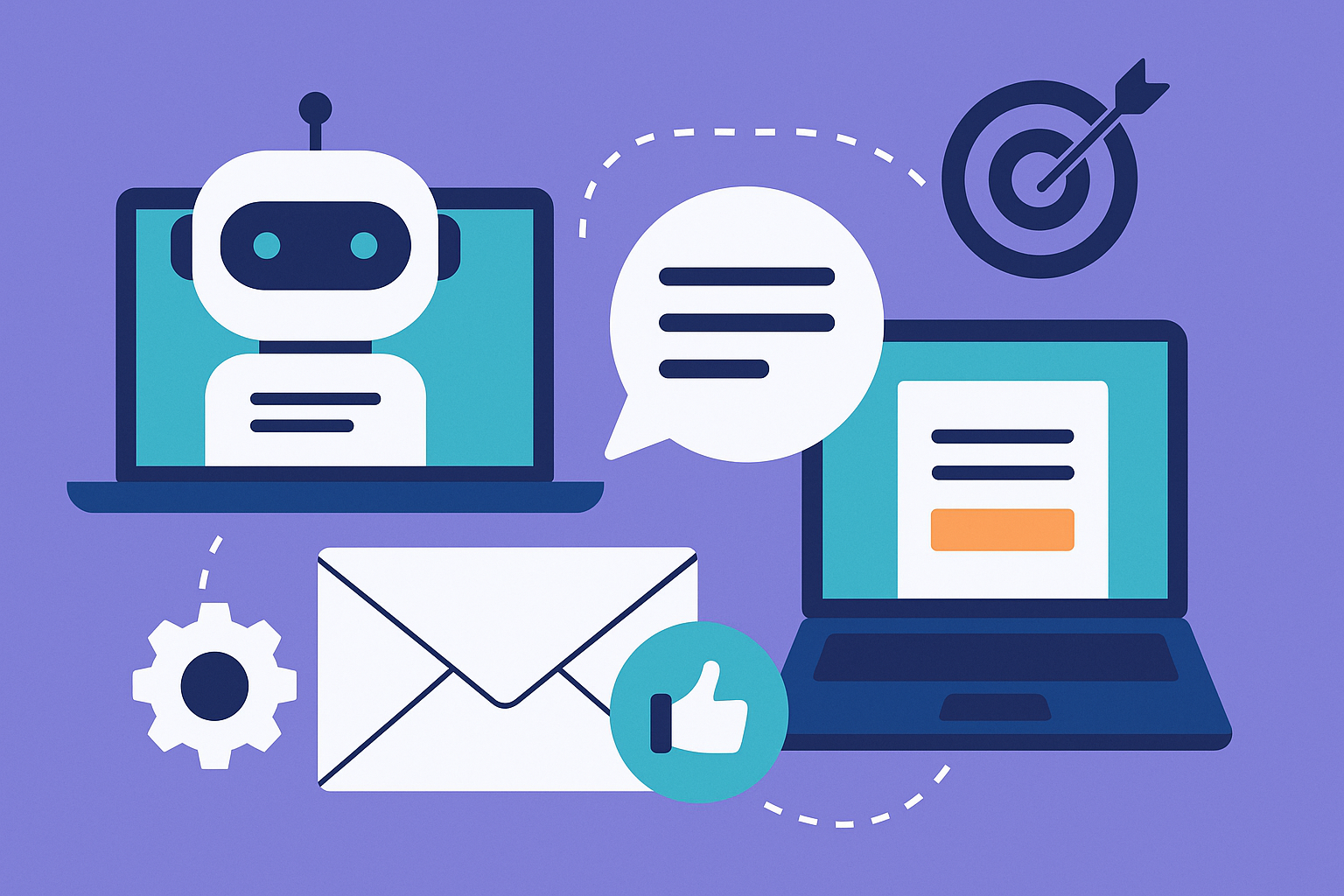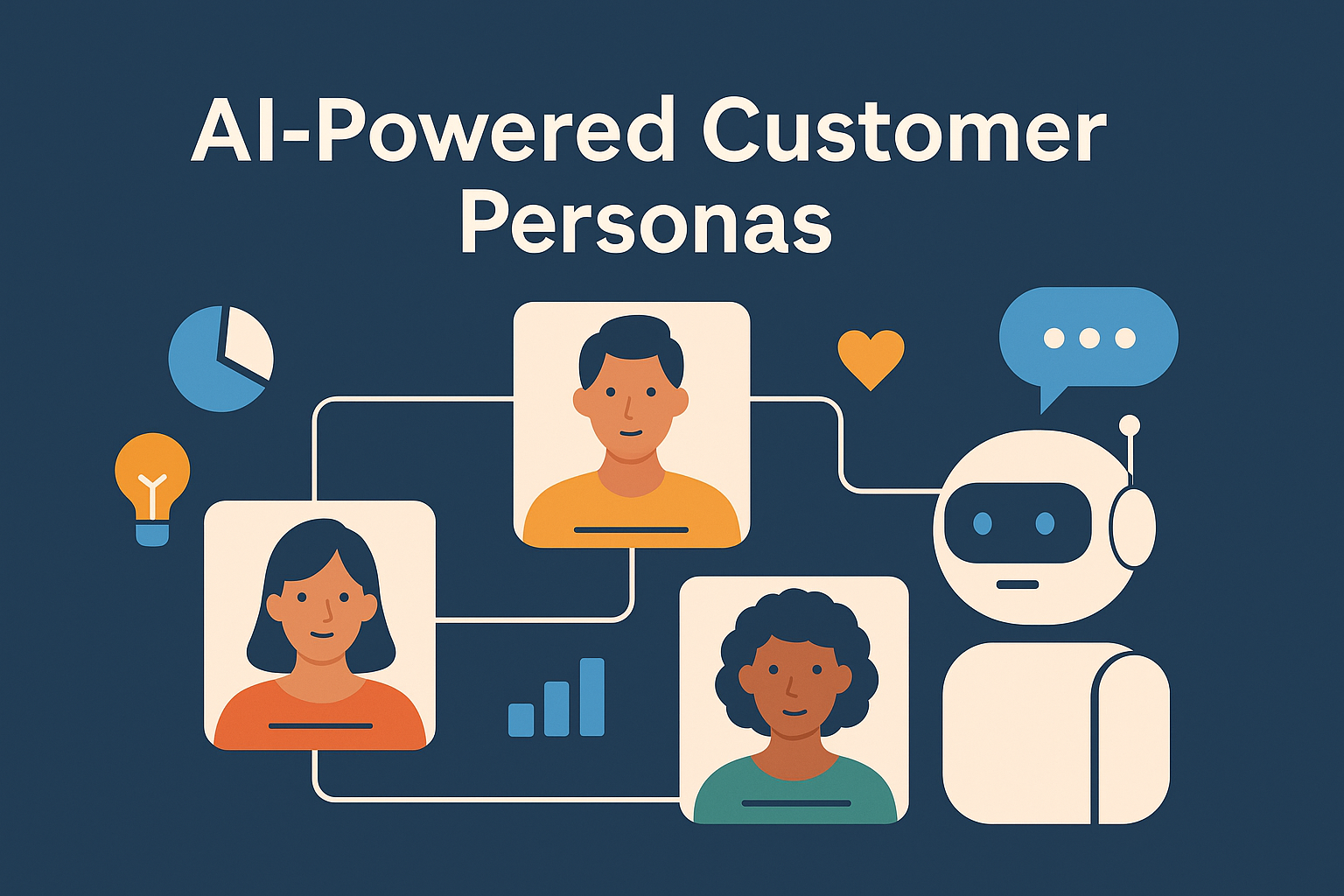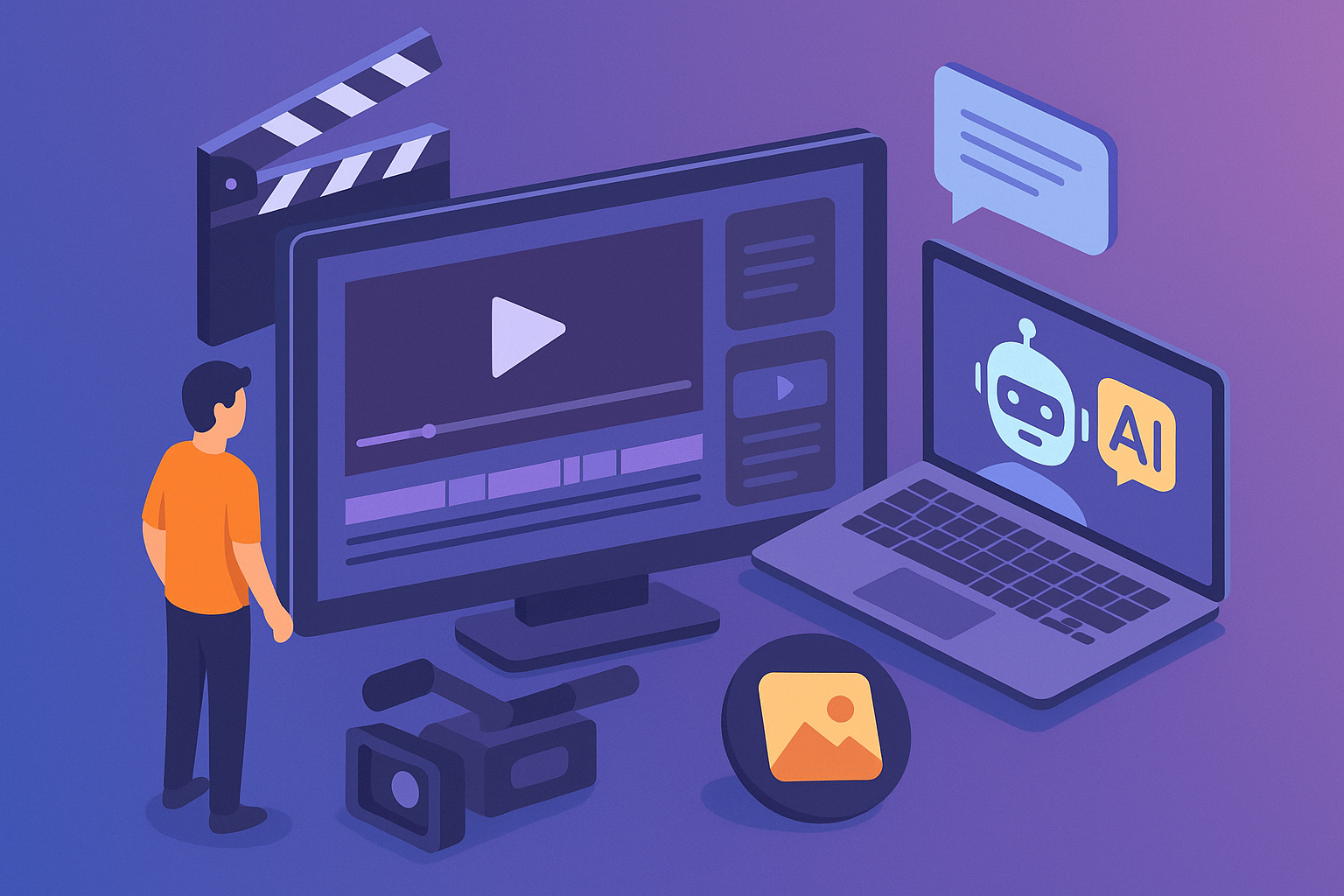Quick AI‑Powered A/B Testing Guide

Thanks to AI, you no longer need a data science degree or a six-month roadmap to run meaningful A/B tests.
You just need clear goals, focused inputs, and a few smart tools.
Whether you’re optimizing landing pages, subject lines, ad copy, or CTAs, AI can reduce the guesswork and shorten the feedback loop dramatically.
Here’s how to set up smarter A/B testing with AI—faster, cheaper, and with insights you can actually use.
Step 1: Use AI to Generate Meaningful Test Variants
Most A/B tests fail because the differences between variants are too minor. Swapping “Buy Now” with “Get Started” won’t tell you much if your audience can’t tell the difference—or doesn’t care.
AI tools like ChatGPT, Copy.ai, and Jasper can generate diverse, strategically differentiated content that actually tests ideas, not just phrasing.
Example prompt for ChatGPT:
“Generate three landing page headlines promoting a digital marketing course. One should highlight urgency, one should focus on ROI, and one should create curiosity.”
You can do this for:
- Headlines
- Subject lines
- Email openers
- Calls-to-action
- Social ad hooks
- Hero section body copy
The goal is to make your A/B tests sharper and your insights more actionable. You’re not testing to see what might work—you’re testing to validate what will scale.
Step 2: Pre-Test Your Variants Using Predictive AI
Before you even launch a campaign, use AI tools like Anyword or Headline Studio to predict how your content will perform.
Anyword, for example, scores your headlines and ad copy for click-through rate, conversion potential, and engagement—based on your audience segment and platform (e.g., Facebook, Google Ads, email).
This helps you eliminate low performers early and only test the best versions.
Workflow Tip:
Run all AI-generated variants through predictive scoring first. Only A/B test the top 2–3 performing options. This saves budget and speeds up time to insight.
Step 3: Test What Moves the Needle—Not What’s Easy
It’s tempting to test colors or button shapes because they’re easy to change. But for lean teams, every test must earn its keep.
Focus your A/B testing on high-leverage elements:
- Value propositions
- Headlines and hooks
- Lead capture forms
- Social proof and credibility indicators
- CTA positioning and language
These are the levers that impact actual behavior—not vanity metrics.
Tools like VWO, Convert.com, or Google Optimize (while still available) let you run lightweight split tests on pages without needing developers.
Step 4: Automate the Setup with No-Code Workflows
Manual setup kills momentum. Instead, use Zapier or Make to automate your A/B test workflows end to end.
Example: Automate email A/B testing
- Use MailerLite or ConvertKit to create two subject lines for the same email.
- Set up Zapier to:
- Monitor open rates in real time.
- Automatically tag subscribers by engagement.
- Move the winner into your default sequence.
For landing pages:
- Track submissions by variant URL.
- Push data into Google Sheets.
- Set a threshold (e.g., 100 visits), then trigger Slack notifications when one version leads by 20% or more.
With automation, you don’t have to monitor tests constantly—you just get updates when it’s time to act.
Step 5: Combine AI + Analytics to Learn Faster
The power of A/B testing isn’t in the test—it’s in the learning.
Use tools like:
- Hotjar or FullStory for behavior analytics
- HubSpot or Segment for lead tracking
- Google Looker Studio for visualization
Pair this data with AI summarization:
Feed your metrics into ChatGPT with a prompt like:
“Summarize the results from this A/B test. Version A had a 2.1% conversion rate on 1,200 visitors. Version B had 2.9% on 1,100 visitors. What’s the confidence level? What should I test next?”
Now you’re not just reacting to numbers—you’re turning AI into your analyst.
Step 6: Turn Winners into Repeatable Assets
Once you find a winning element, bake it into your brand system:
- Update email templates with the best subject line format.
- Use high-performing CTAs across all campaigns.
- Build new pages based on the top layout structure.
AI can help here too. Ask your copy tool to:
“Rewrite this winning ad headline into five email subject lines and three landing page headers, keeping tone and voice consistent.”
You’ve now multiplied the impact of one test across your entire funnel.
Step 7: Build a Lean Testing Cadence
You don’t need to run 20 tests at once. Set up a monthly optimization sprint:
- Week 1: Identify bottlenecks in your funnel.
- Week 2: Use AI to generate test variants.
- Week 3: Launch the test with predictive scoring + automation.
- Week 4: Analyze results and apply learnings.
Use a lightweight tool like Notion, Trello, or Airtable to track experiments, results, and next steps.
Quick Recap: Your Lean A/B Stack
Here’s a cost-effective toolkit to launch AI-powered A/B testing:
| Tool | Use |
|---|---|
| ChatGPT / Jasper / Copy.ai | Generate diverse, test-ready content |
| Anyword | Predict copy performance before spending |
| Zapier / Make | Automate data flow + notifications |
| Convert.com / VWO | Run A/B tests without dev time |
| Hotjar / Google Analytics | Understand user behavior |
| Airtable or Notion | Track your tests and insights |
A/B testing isn’t about obsessing over micro changes—it’s about learning what works faster than your competitors. And with AI, what used to take weeks can now be done in hours.
For lean marketers, this isn’t a luxury. It’s how you out-execute bigger teams with fewer resources.
Use AI to generate smarter ideas, automate setup, and pull clearer insights.
Then rinse and repeat.
You don’t need to test everything, you just need to test the right things, consistently.










